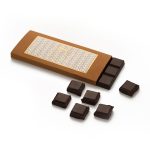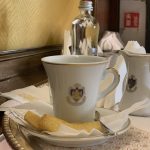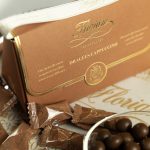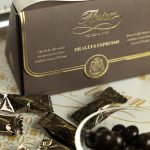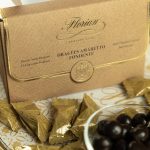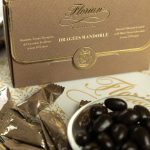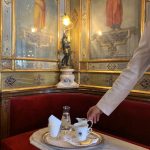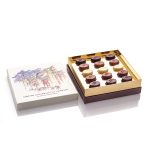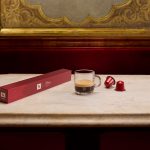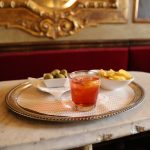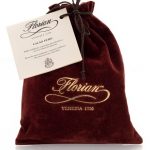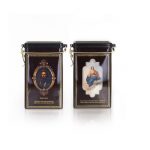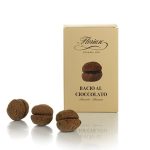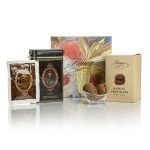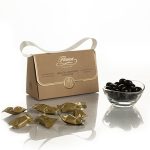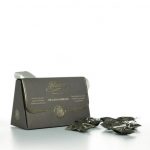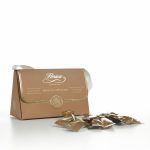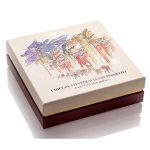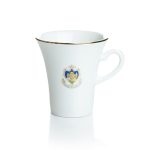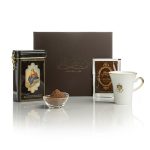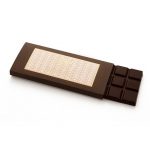- Gourmet
Cocoa in venetian cuisine: a journey through history and flavors
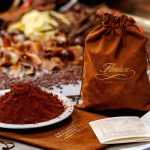
Discover cocoa and its secrets on this journey through centuries and continents
Cocoa, with its enveloping aroma and irresistible flavour, is more than just an ingredient.
It is a story of adventures, discoveries and mouth-watering pleasures.
The journey of cocoa: from the Americas to the heart of Venice
Considered a ‘gift from the gods’, the cacao tree was of great importance to the Olmec culture, the ancestors of all subsequent Mesoamerican civilisations. Indeed, the plant was seen as a conduit between the human world and the supernatural realm.
According to legend, the cacao plant was given to mankind to foster the capacity for love: the Aztec god Quetzalcoatl, depicted as a feathered serpent or wind deity, wished to be reciprocated in love by Mayahuel, a mortal woman with whom he was in love.
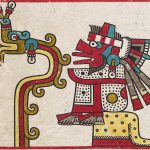
Quetzalcoatl, Aztec deity depicted as a feathered serpent
Botanical research dates the plant back more than six thousand years, but it was the scientist Carl Linnaeus in 1759 who gave the cacao tree the scientific name ‘Theobroma’: from the Greek ‘theos’ (gods) and ‘broma’ (food), meaning ‘food of the gods’.
Theobromine is the substance (purine alkaloid) in cocoa beans that has made them as valuable as gold throughout history. In fact, they were considered a currency: 4 cocoa beans could buy the equivalent of a rabbit, 10 beans a donkey and 100 beans a slave.
They were the first gift Christopher Columbus received when he arrived on the island of Guanaja, off the coast of the Hounduras, in 1502.
It was thanks to him that cocoa beans were introduced to the Real of Spain, a country that would become the centre of chocolate, which spread throughout Europe before becoming a monopoly of the Dutch.
Chacauhaa in the Aztec language Nahuatl means a hot broth of cocoa beans: ‘chacau’ (hot) and ‘haa’ (water).
Spices, chilli and yellow flour were added to the cocoa beans. Water was then poured and stirred into a froth with the molinillo, a traditional hand-carved wooden whisk.
Over time, ‘chacau‘ became ‘chocol‘, leading to the word ‘chocolhaa‘, which is the phonetic root of the modern ‘chocolate‘.
The resulting broth was recognised as having mystical and religious value; associated with fertility, it was consumed by the elite during the most important ceremonies.
Montezuma, the king of the Aztecs, is said to have consumed a large quantity of it every day, served in golden cups. Unfortunately, he made the mistake of interpreting the arrival of the Spanish conquistador Hernan Cortès as the prophesied return of the god Quetzacoatl. The rest of the story is sad and well-known, and ends with the extinction of an extraordinary civilisation.
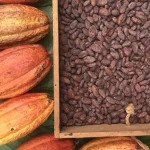
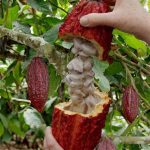
Cocoa and chocolate have maintained their sacred value, linked to love and well-being: this exquisite, steaming drink was drunk by Giacomo Casanova a Venetian writer, philosopher and seducer who lived in the 18th century.
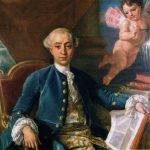
Casanova loved sipping hot chocolate for its aphrodisiac properties
He used to drink it in the company of women at the Caffè Florian because of the aphrodisiac properties of theobromine, which has stimulating and cardiotonic effects on the entire central nervous system.
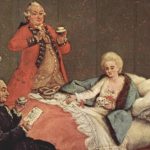
"The morning chocolate" Pietro Longhi (1701-1785)
The history of colonial conquest made Madrid the centre of the European cocoa bean trade. Spanish monks were the first to modify the original recipe. By adding vanilla, cinnamon, aniseed and the precious sugar from the Orient, they created a drink that was irresistible to the palates of the europeans.
Throughout the 16th century, hot chocolate was a jealously guarded secret that won over the aristocracy and the Church: ‘Liquidum non frangit jejunum’. Recognised as a liquid food that did not break the fast and even helped during vigils, steaming chocolate became the typical drink of Lent.
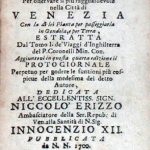
"Foreigners' Guide" by Vincenzo Maria Coronelli (1714)
In 1714, the cartographer Vincenzo Maria Coronelli wrote the first comprehensive guide to exotic beverages that can be drunk in Venice and mentions it together with coffee in “Guida de’ Forestieri” per sapere tutto ciò che si contiene di nobile e diletevole’ (guide for foreigners to discover all that is fun and noble in town).

Map of Venice to discover where to drink "exotic drinks"
Chocolate arrives in the salons of the European aristocracy and Italy becomes the second country to be conquered by the “food of the gods”.
Chocolate, which was only eaten at breakfast in aristocratic families, became part of the menu at the Caffè Florian, a place dedicated to socialising.
A new social code was born in Venice, leading to a social and anthropological revolution: everyone could drink hot chocolate and everyone, regardless of social class, could meet and exchange ideas in a public place.
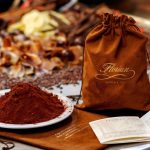
Pure Cocoa powder Florian: the most delicious chocolate from the most authentic Venetian tradition
Chocolate at Caffè Florian: a taste journey through tradition
With Florian cocoa powder, every creation becomes a work of culinary art.
This precious ingredient is the ideal ally for preparing a wide range of desserts such as dark chocolate cakes or chocolate Baci biscuits. Of course, cocoa powder is fundamental in the classic Tiramisu interpreted by our Chef: decorated with a shower of Florian cocoa, it enriches it in the aesthetic sense and gives it an unmistakable touch of flavour.
The food of the gods is of course at the basis of the preparation of Florian hot chocolate, celebrated and esteemed among the best in the world: it is the emblem of a tradition that combines delicacy with aromatic strength, originating from the selection of first-rate cocoa beans from Central Africa.
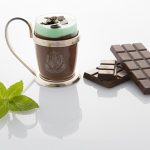
Cioccolata Casanova: hot chocolate, mint cream and chocolate shavings
As a tribute to its historical figure, Caffè Florian has created “Cioccolata Casanova”, which combines the seductive taste of chocolate with the fresh and surprising flavour of mint cream. A contrast that explodes on the taste buds to melt and unite on the palate.
A lover and connoisseur of fine cuisine, Giacomo Casanova had refined tastes and loved to indulge in pleasures that offered multi-sensory experiences.
The sensuality of a hot, creamy, velvety drink was an indispensable pleasure for him.
Savouring it in the company of a woman comfortably seated on the red velvet sofas at the Caffè Florian was part of a series of rituals that made his existence emblematic of the hedonism of 18th-century Venetian society.
Cultivating the pleasures of the senses has been my main occupation all my life, and I have never had another more important one. Feeling born for the opposite sex, I have always loved it and made myself love it as much as possible. I have also loved good food and all things that excite curiosity.
(Giacomo Casanova)
Cocoa in Modern Venetian Cuisine
In the culinary history of Venice, cocoa stands out as an ingredient that masterfully combines tradition and innovation.
In modern Venice, cocoa is a symbol of timeless elegance, renewed and adapted to contemporary tastes.
In Venetian restaurants, cocoa can be found in dishes that reflect the city’s history, such as ‘risotto al nero di seppia’, where cocoa adds a note of depth and complexity.
In today’s Venice, cocoa is a bridge between the gastronomic heritage of the past and the boldness of new culinary trends: it keeps alive the soul of a city that has always been at the crossroads of different cultures.
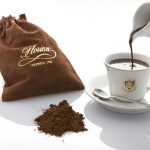
Hot chocolate is a classic Florian's tradition and famous to be one of the finest in the world
Florian hot chocolate is made using traditional methods. With the right proportions of cocoa, sugar and latte, it is cooked in a vessel reserved for this purpose.
According to European tastes, Florian has chosen a “bitter” blend. In keeping with tradition, the chocolate is served with a well-balanced taste, as is customary in Venice.
Gourmets will be able to enjoy it at home with the preparation we have packaged in the Marco Polo tin or in the Allegory of the Senate Hall: very easy to prepare, it guarantees a perfect result.
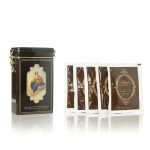
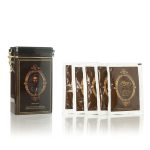
The art of venetian chocolaterie
The chocolate tradition is based on a deep knowledge of the origins of cocoa and a respect for its historical role in gastronomy.
This respect translates into an unwavering commitment to keeping traditional techniques alive while incorporating new ideas and trends to surprise and enchant chocolate lovers around the world.
The mastery of cocoa and chocolate is an art passed on with passion and dedication. With their skilled hands, chocolate artisans transform cocoa beans into creations that delight the palate and warm the heart. This tradition, rooted in history and culture, is expressed through meticulous attention to detail, from the selection of the best raw materials to the use of refined techniques.
The Caffè Florian, witness to centuries of encounters and culture, continues to be a laboratory of flavours, where cocoa is explored in all its potential.
Indulge in the Venetian Legacy with Our Gourmet Chocolates
Discover the spirit of Venice’s entrepreneurial zeal and global curiosity with our exquisite selection of gourmet chocolates. Each piece is a testament to the world’s beauty, captured through the diverse origins of our cocoa beans.
Ugandan Extra Dark Chocolate: A Symphony of Flavors
Our Ugandan extra dark chocolate bar is a masterpiece of flavor, boasting 78% cocoa paste from Bundibugyo region. Experience the harmony of intense cocoa aromas balanced with sweet notes and a hint of delicate spice. It’s not just chocolate; it’s a bold, clean, and pure indulgence.
Elegance in Every Box: Adrian Tuchel’s Artistic Touch
Our pralines and napolitaines, encased in elegant boxes adorned with Adrian Tuchel’s watercolors, are the perfect gift for connoisseurs and chocolate aficionados worldwide. They’re not just sweets; they’re a celebration of art and taste.
Florian’s Coffee and Dragées: The Perfect Pairing!
At Florian’s, each coffee is served with a dragée: a small gesture that enriches the pleasure of tasting.
Almond, Amaretto, Espresso, or Cappuccino: a delicious touch that elevates the coffee experience to an art of taste.
A harmonious fusion of flavors that blends the universe of coffee with that of chocolate.
